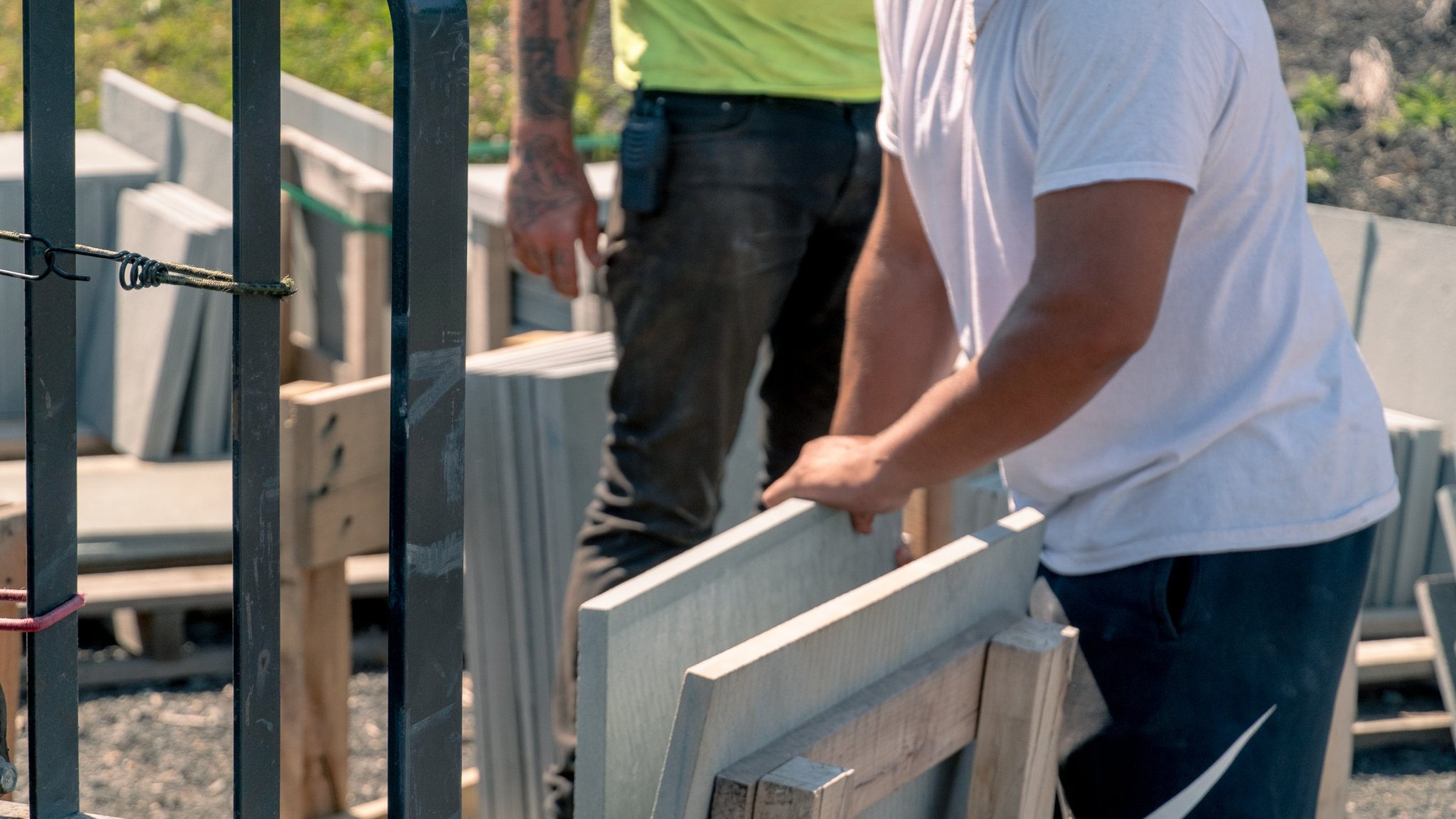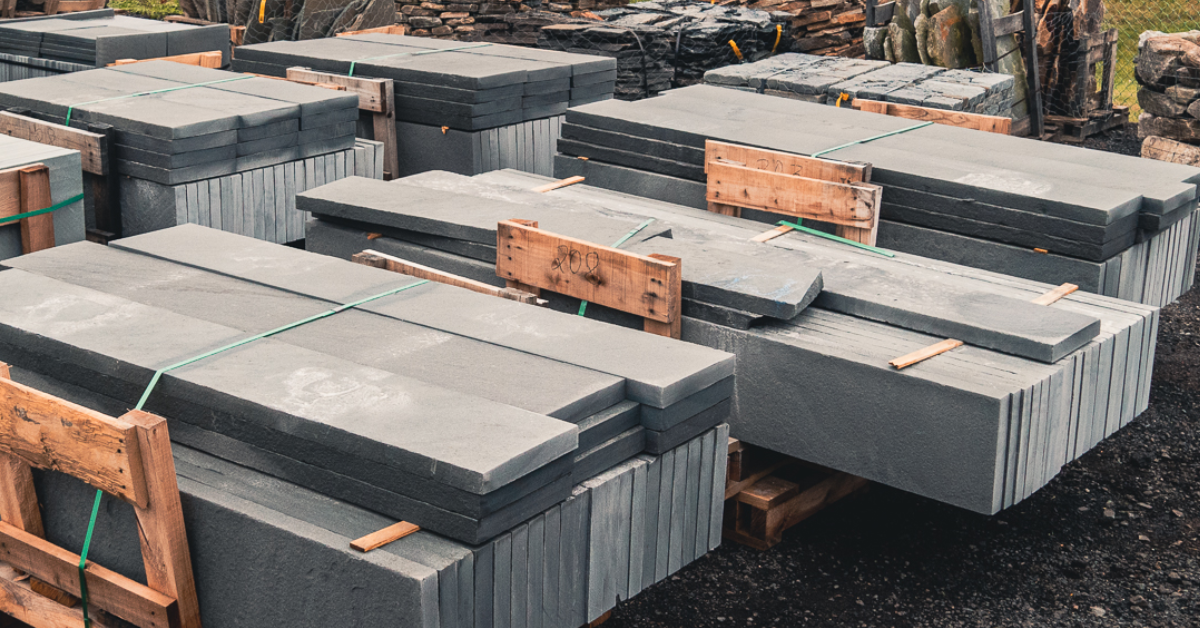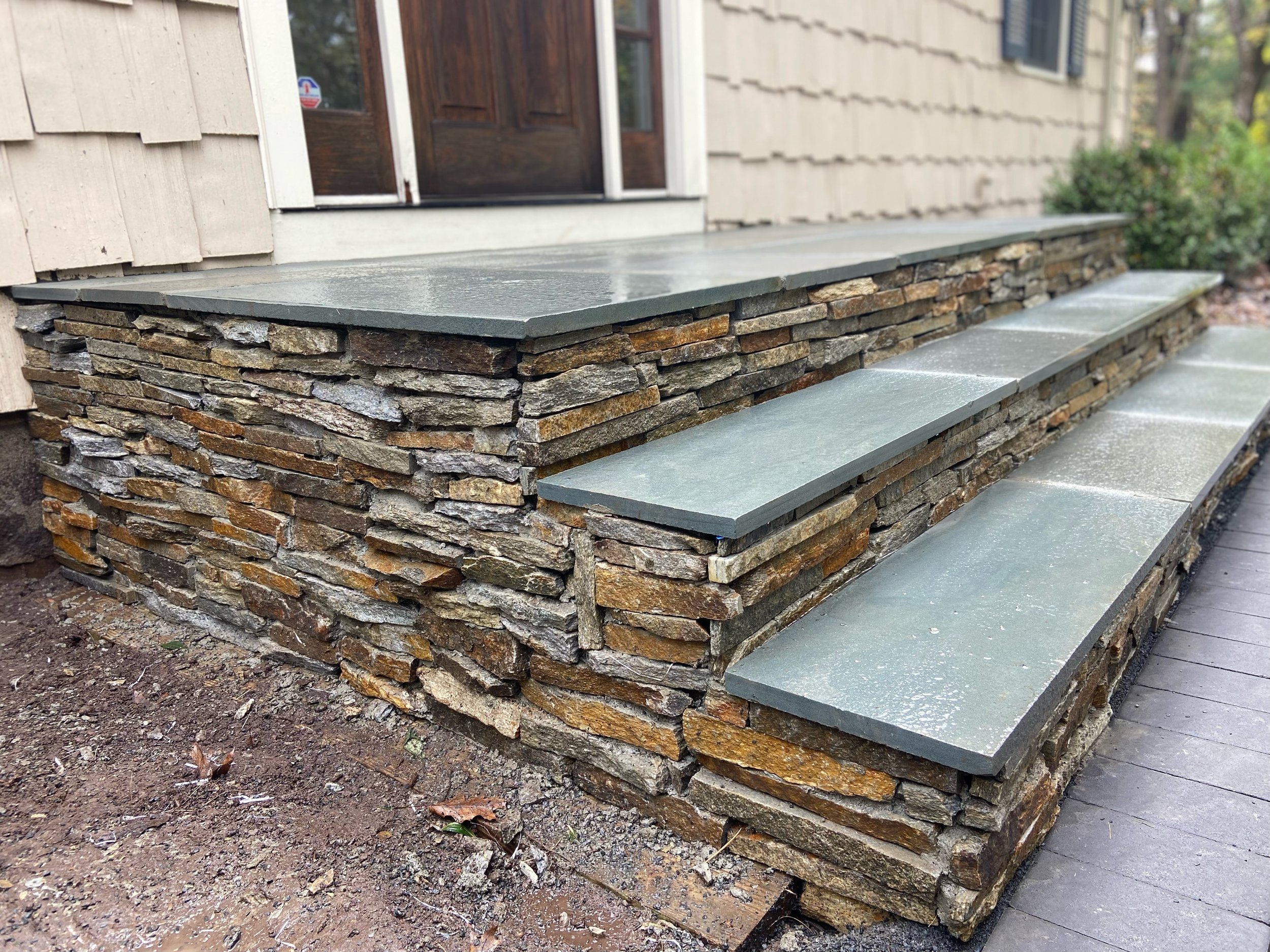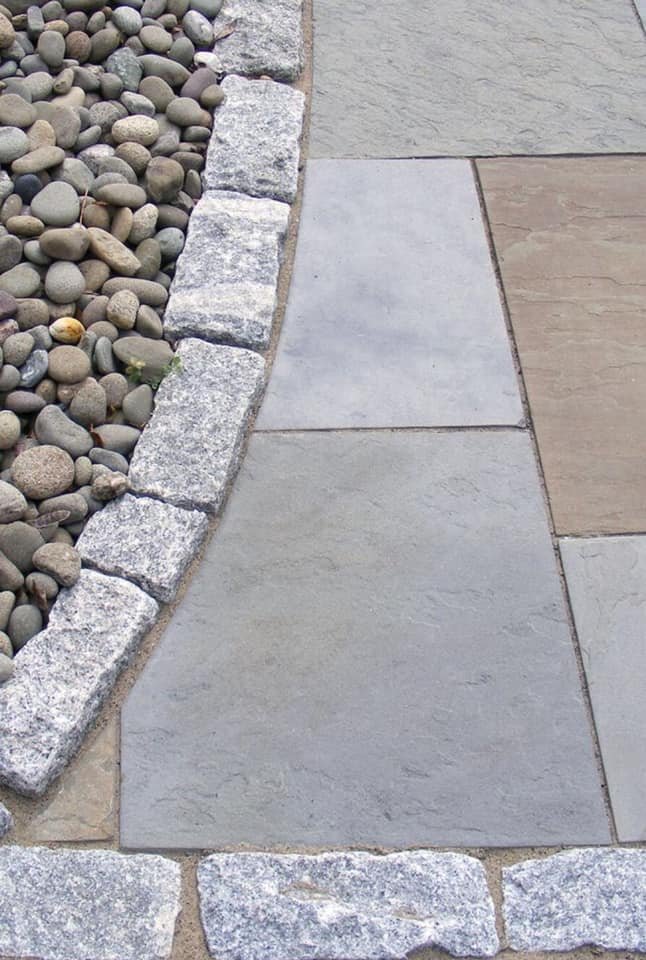
Bluestone
What is Bluestone?
Bluestone is a highly durable and visually appealing natural stone that is widely used in landscaping projects. Its typical gray or blue-gray color, along with its earthy tones, makes it a perfect choice for creating harmonious and elegant outdoor spaces. Bluestone is formed from sand, clay, and other organic materials that have been compressed over time.
Common uses for Bluestone
Resurfacing a porch/stoop
Replacing stair Treads
Patio/walkway
Cap for walls or pillars
Stepping Stones
Outdoor Kitchen Countertop
Fireplace Hearth or Mantle
Pros and Cons of Bluestone
Pros:
Durability: Bluestone is long-lasting and can withstand weather and temperature fluctuations when sealed.
Aesthetic Appeal: Its earthy colors complement the natural landscape, and it comes in various shapes and sizes.
Non-Slip Surface: The rough texture of bluestone makes it less slippery, even when wet.
Cons:
Cost: Bluestone can be more expensive than man-made materials like concrete or brick pavers.
Heat Retention: Darker-colored bluestone can become too hot for bare feet in direct sunlight.

Pattern Bluestone
Pattern bluestone is offered in thicknesses of either 1 inch or 1-1/2 inches, featuring a range of square and rectangular shapes. It is commonly utilized for constructing patios, walkways, porches, and floors.

Treads
Bluestone Treads
Bluestone treads come in thicknesses of either 1-1/2 inches or 2 inches and may feature a thermal or rock face finish. They are frequently utilized for refurbishing old steps, as caps for retaining walls, or as mantels for fireplaces.







